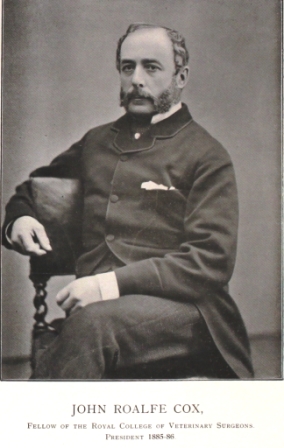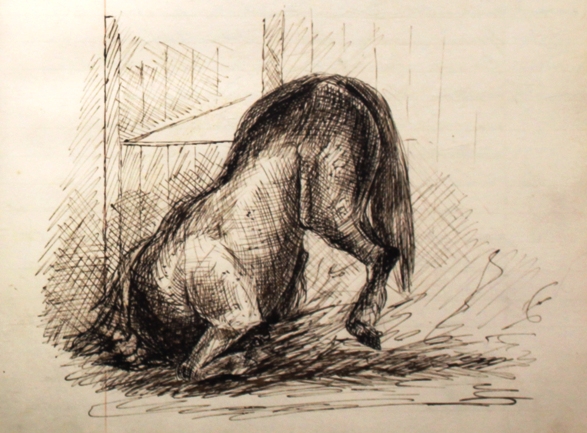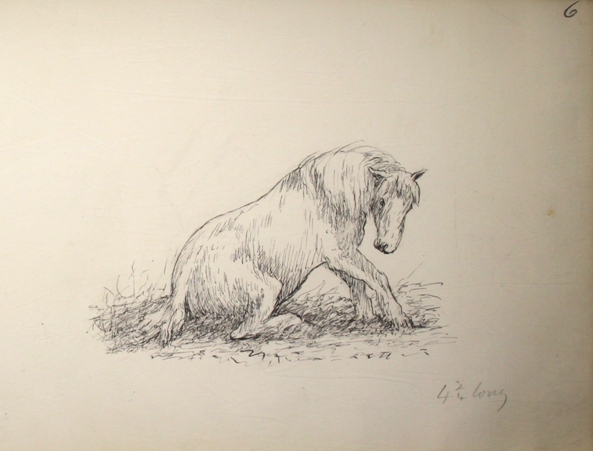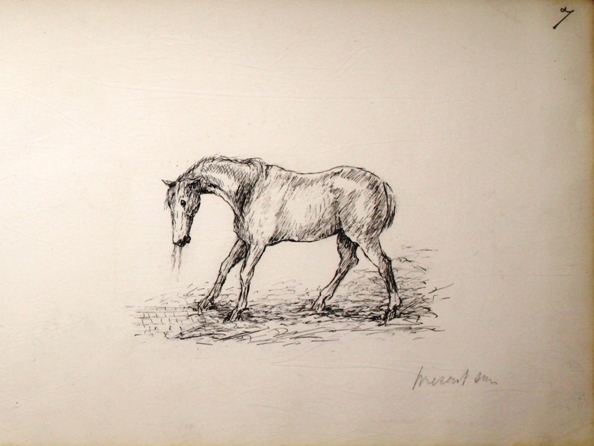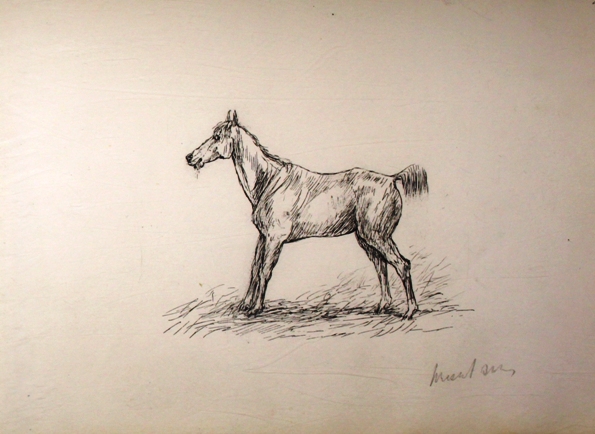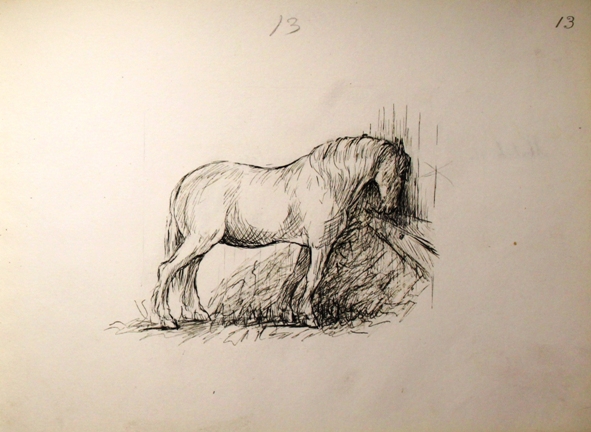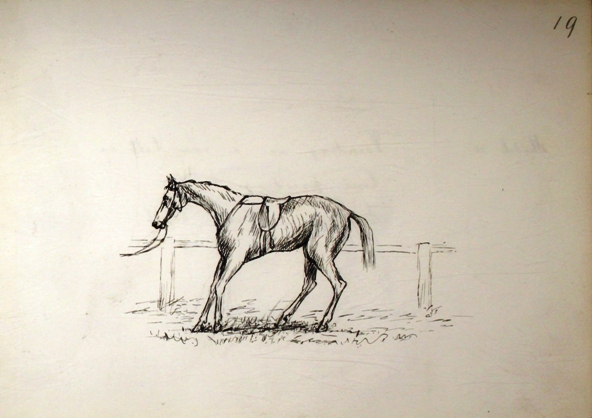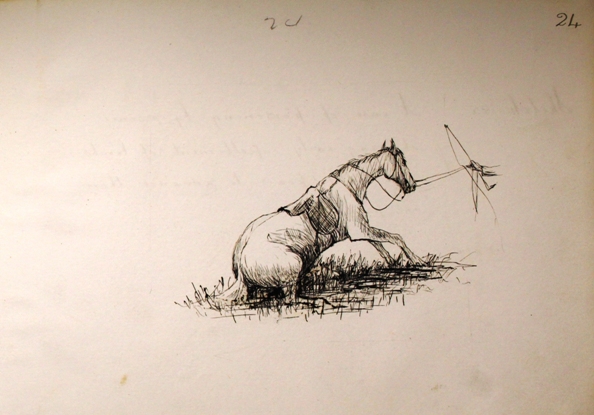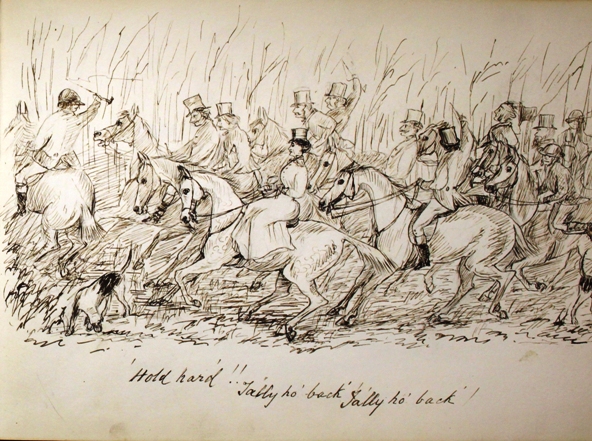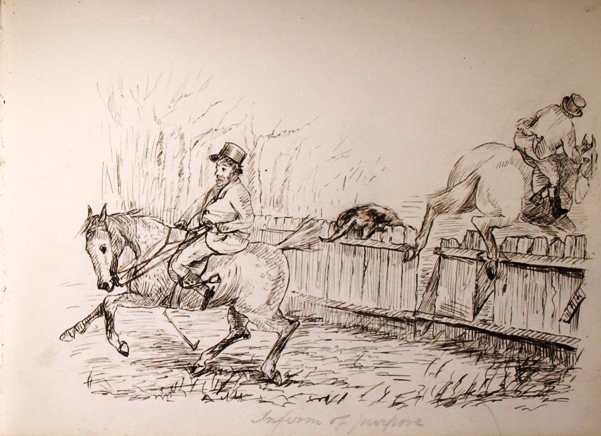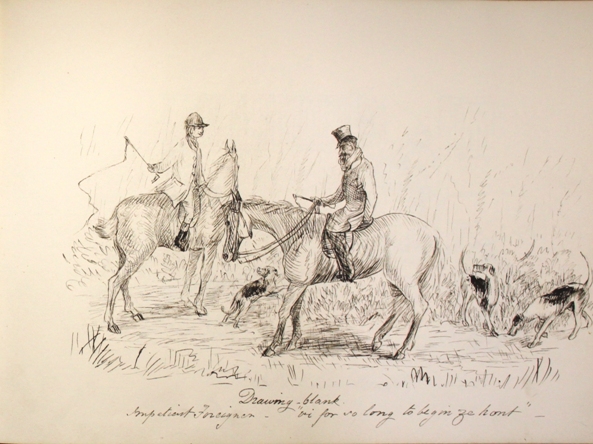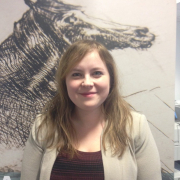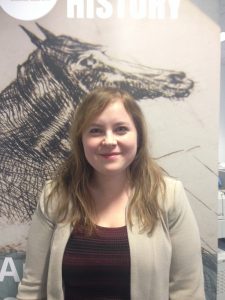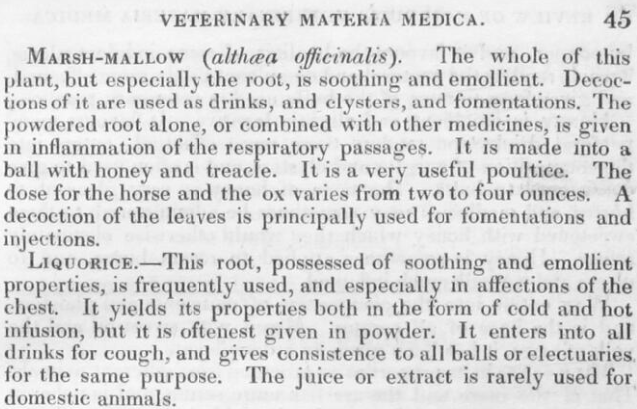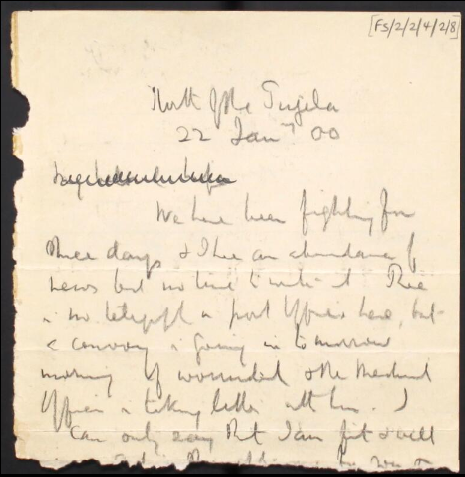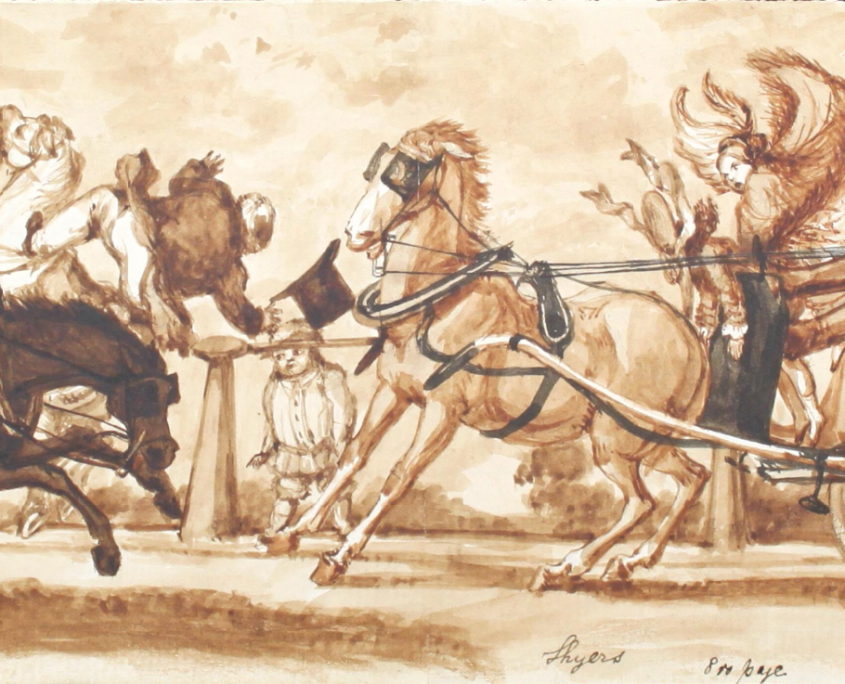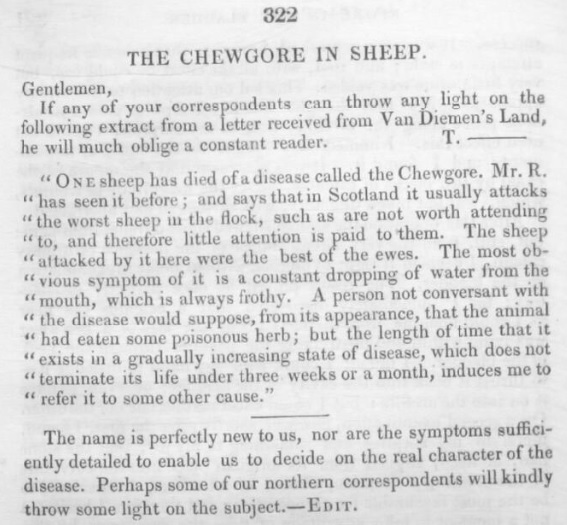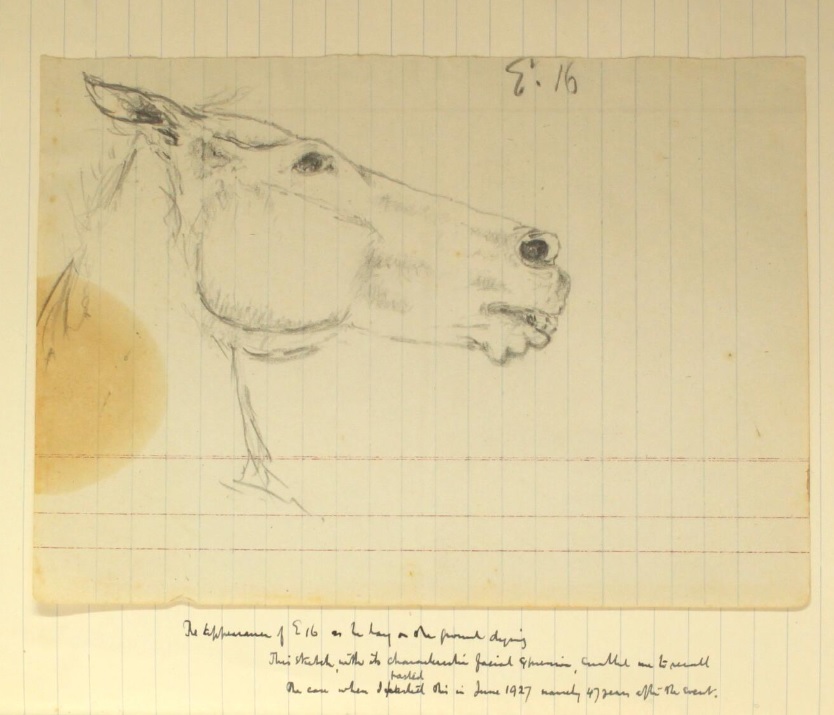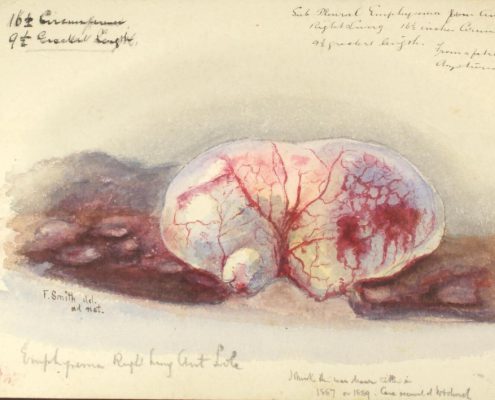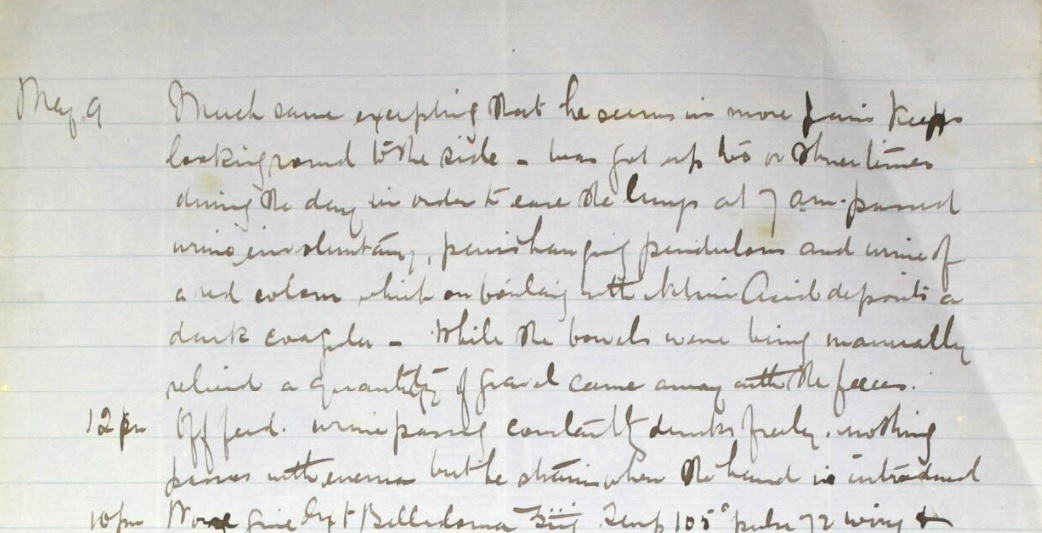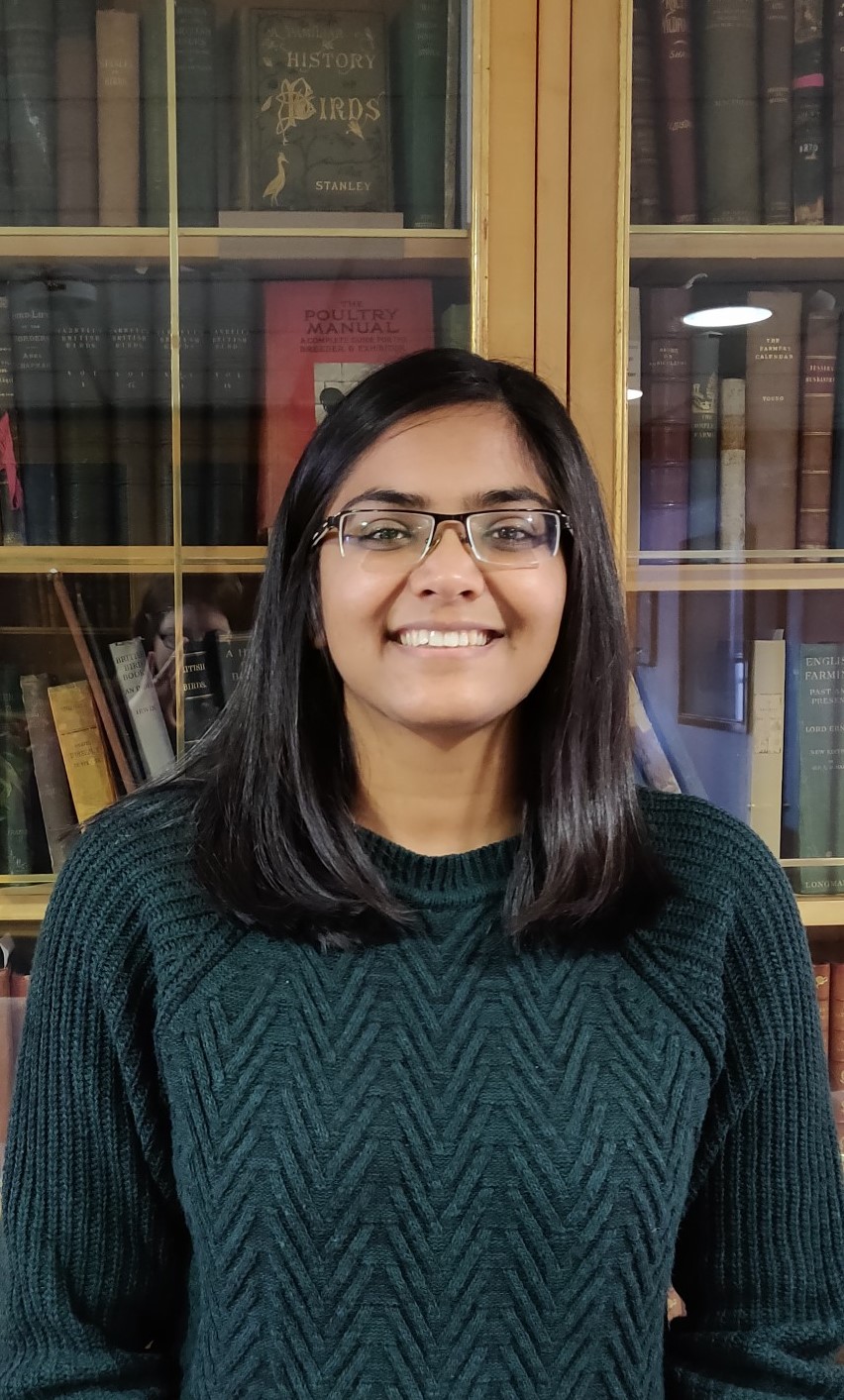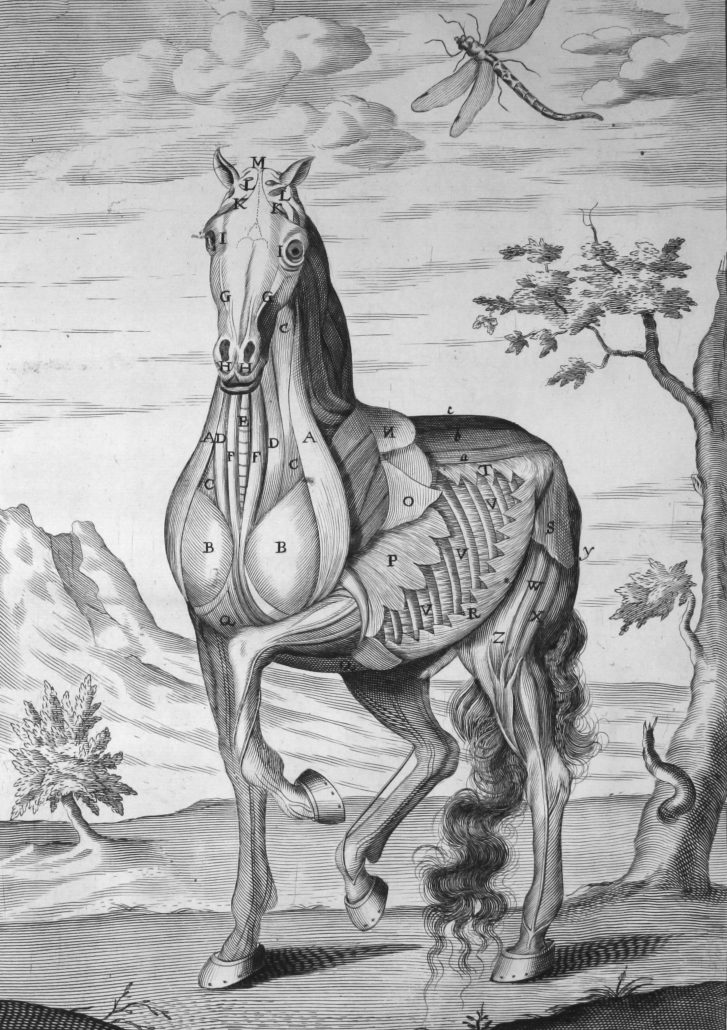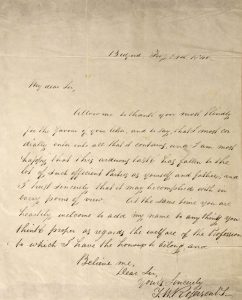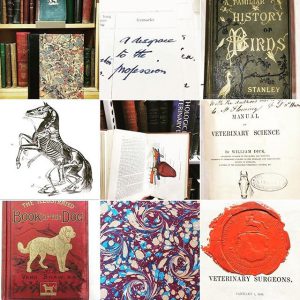1 July 1916, the first day of the Battle of the Somme, is a day remembered as one of the worst in British military history. The attack commenced at 7.30am; by the end of the day, 19,240 British soldiers had been killed and three times that number injured. The battle lasted 140 days, and amongst the thousands who took part was at least one future member of the veterinary profession.
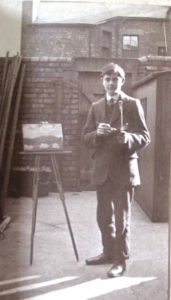
William Moss 1914
At the outbreak of war, Lieutenant William P. ‘Willy’ Moss was an 18 year old art student, noted to have a talent for capturing ‘the essence of animals.’ In October 1914 he joined up and was commissioned into the 2nd Battalion Royal Irish Rifles. He was sent to France in October 1915, and was injured by both a gas attack and mortar fire in early 1916. His battalion was held in reserve at the opening of the Battle of the Somme, but early on 7 July they relieved the men of the Cheshire Regiment in the British trenches. Ordered to penetrate a breach in the German line at 09.50am Moss lead his men into ‘no-man’s land.’ Due to the heavy rain the previous night the men soon sank to their knees in the mud and were met by an onslaught of machine gun fire.
Moss was hit in the leg, fell and lay helpless and unable to move. After several hours, his batman managed to carry him over 100 yards to the British trenches. The ferocity of the action that morning was described as like ‘hell let loose.’ During the encounter 30 men of the battalion were killed and 120 wounded. Moss was evacuated to hospital with a gunshot wound to his left tibia. He was sent home for treatment, which took many months, and left him with a permanent deformity of his leg. For his actions he was awarded the Military Cross in 1917, he did not return to France.
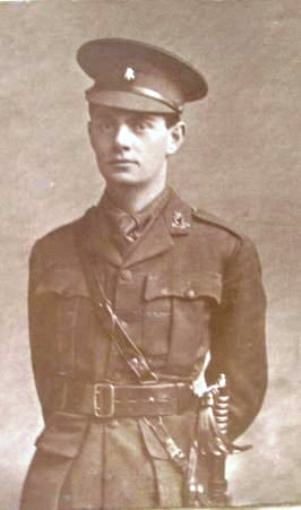
Lieutenant WP Moss 1917
Following demobilisation from the Army Moss was unsure of his future and applied for a place at the Royal Veterinary College in Ireland. Commencing his studies in Ireland in 1919, he did his final year at the Royal Veterinary College, London and qualified MRCVS in 1923. Initially he worked as a Veterinary Inspector for the Ministry of Agriculture, in the control of foot and mouth disease. Four years later he established a veterinary practice in Woking, Surrey and at the same time joined the RAVC as a territorial officer. At Woking, he was able to rekindle his love of art, joining the Woking Art Club.
With the outbreak of war in 1939, Moss again served his country, one of several veterinary officers dispatched to Palestine with the 1st Cavalry Division. He arrived in Palestine in December 1939 and three months later was posted as Veterinary Officer to the Cheshire Yeomanry. Over the next year he combined his veterinary work with his skill as an artist, drawing many scenes of the cavalry in Palestine.
In June 1941 plans were laid to capture Lebanon and Syria, with the Cheshire Yeomanry set to play a crucial role securing the River Litani, in southern Lebanon. As the men and horses moved into position one observer recorded that they were like ‘trespassers about to partake in a picnic on forbidden ground, rather than an invading force going to war. Everyone was excited.’ Advancing across the river the yeomen came under heavy machine gun fire, six horses were killed and several injured. Moss found that evacuation of injured animals was extremely difficult due to the nature of the terrain. Eventually they started to make their way north arriving in Damascus after five weeks, where the armistice parade included the men and horses of the Cheshire Yeomanry. The battle of the River Litani was to be the last occasion when British troops went into battle on horses.

The Machine-gun Section: Cheshire Yeomanry, going into action in Syria © IWM (Art.IWM ART LD 5742)
Mechanisation of the Cheshire Yeomanry in December 1941 meant Moss’ veterinary services were no longer required. He took command of a Druze Cavalry Regiment where he encountered an official War Artist, Anthony Gross who described meeting a ‘wonderful Irishman, the vet, called Moss; a real scream.’ On seeing Moss’ art work Gross advised him to write to the War Artist’s Advisory Committee (WAAC) in London. They were impressed by the portfolio, especially the black and white sketches, and Moss was awarded a ‘Category C’ contract. Other artists in this category included Stanley Spencer, Jacob Epstein and L. S. Lowry. Moss was the only veterinary or medical officer to receive a contract from the WAAC.
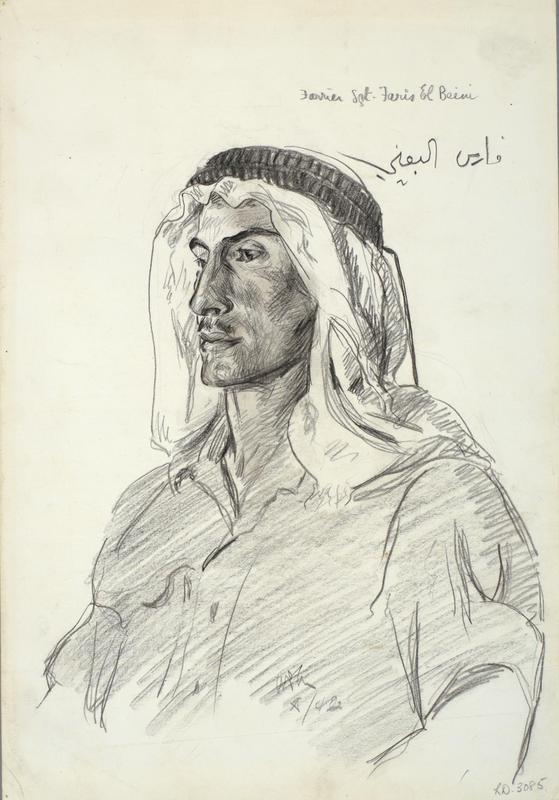
Farrier Sergeant Faris el Beini © IWM (Art.IWM ART LD 3085)
Moss continued to serve in the Middle East until early 1945, when he returned home. He did not return to veterinary practice, but instead pursued farming as well as his interest in art. A number of his original works are held by the Imperial War Museum. We are fortunate to have, in our Collections, a number of the sketches he made of the veterinary profession to illustrate articles on the ‘Modern Veterinary Surgeon’ published in Sport & Country in 1946. William Moss, MC, MRCVS died in 1980.
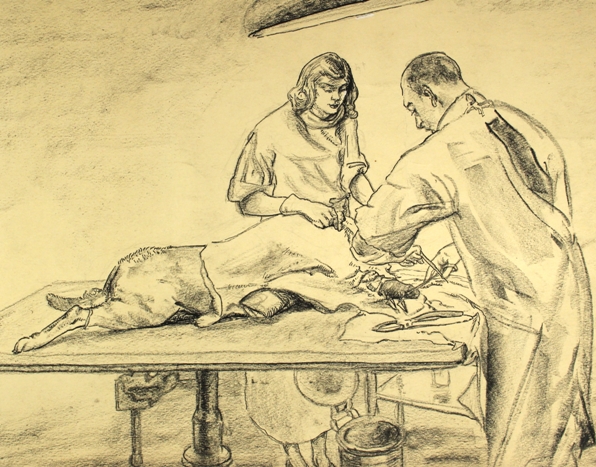
At the London Clinic: resetting a broken leg of a dog
Acknowledgements I would like to thank Dr Paul Watkins MRCVS for his help in compiling this post.
Image credits
The Machine-gun Section : Cheshire Yeomanry, going into action in Syria by W P Moss © IWM (Art.IWM ART LD 5742) reproduced under the IWM Non-commercial Licence
Farrier Sergeant Faris el Beini by W P Moss © IWM (Art.IWM ART LD 3085) reproduced under the IWM Non-commercial Licence
The two photographs of Moss are from a private collection and are reproduced with permission.
